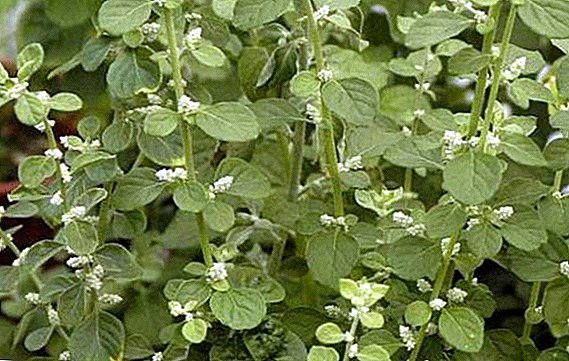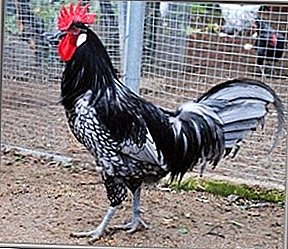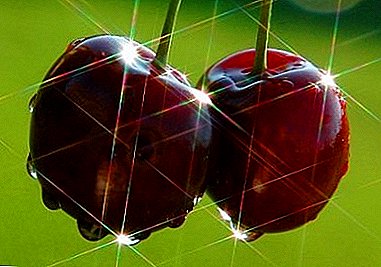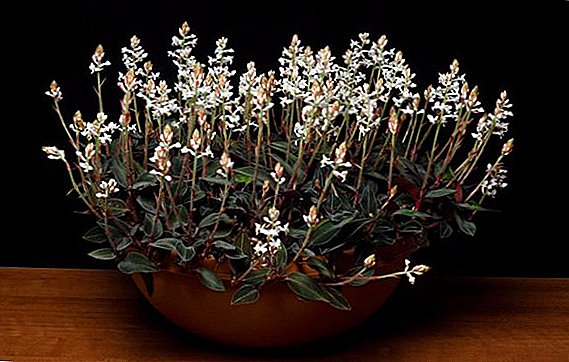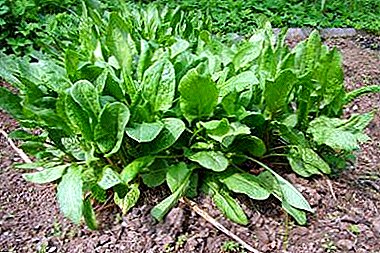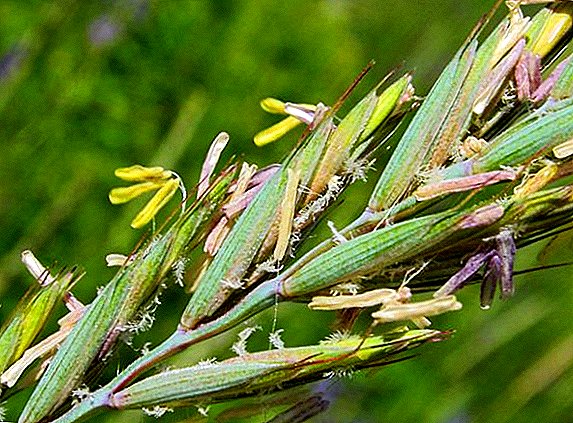 The weeds in the backyard area are the headache of many gardeners: not only do they deplete the soil, absorb all the nutrients, drown out the cultural plantings, but some species are not as easy to get rid of as we would like. Today we will talk about faster creeping let's get acquainted with its description and methods of getting rid of the plant aggressor.
The weeds in the backyard area are the headache of many gardeners: not only do they deplete the soil, absorb all the nutrients, drown out the cultural plantings, but some species are not as easy to get rid of as we would like. Today we will talk about faster creeping let's get acquainted with its description and methods of getting rid of the plant aggressor.
How does it look
How harmless at first glance weed looks like creeping wheatgrass, should not be misleading. This bright green is able to take root in almost 20 centimeters, while occupying up to 3 meters wide. 
We also advise you to find out how to get rid of bluegrass annuals, oats, horsetail, sunflower broomrape, nettles, ryuzki birches, milkweed, dandelion, field bilge, dodder, quinoa, purslane.
It is an herbaceous, cereal, perennial plant with a branched root system, equipped with strong layers, spreading in all directions. The height of the stems can reach 1.5 m. On the stem are alternate narrow and long leaves of bright green color.
During flowering miniature spike-shaped flowers are collected in a large, up to 30 cm in length, ear. The flowering period is June - July, after the spikelet is scattered by seeds, which are happy to pick up and distribute the birds, thus helping to multiply.

How to multiply
Pyraeus propagates by seed and root division. This is a very tenacious plant - its seeds germinate already at 2 degrees of heat, while the young shoots are not afraid of either drought or frost. No wonder he received popular names such as: "zhitets", "diving", "worm-grass".

Vegetative reproduction is also surprising in the ability of the plant to adapt to any circumstances. Pyreus creeping can sprout from any piece of rhizome, which makes it difficult to fight it and makes it necessary to look for answers to the question: how to get rid of a weed, again and again.
Did you know? Despite the cool attitude towards wheatgrass in official medicine, in some countries, state health services recognize its healing properties. For example, in Switzerland and Germany, the plant has a wide range of uses in the official pharmacopeia.
Prevention
Pyrei can be called a pioneer on the cultivated land, therefore, to prevent its occurrence on the site, you can use the culture, the neighborhood with which it can not stand. On the edge of the site, you can plant legumes - peas and beans or sunflower and corn. These plants, in addition to an unpleasant neighborhood, create shade as they grow, and our weed loves good light.
Did you know? In the difficult harvest years, our ancestors used the weed for food. From the rhizomes of wheatgrass milled flour, baked bread, tortillas. It is used now as well: fresh roots go to soups, salads and side dishes, even a coffee-like drink is made from dried and roasted roots.
As prophylaxis on the undeveloped area, you can use mulch. Lay on the surface of the beds a layer of hay 35 cm thick, for a year. This method will not destroy the wheat grass, but making its way to the light, the roots of the plant will leave the soil layer stuck in the mulch. This will allow you to quickly and easily weed.
Methods of struggle
As stated above, weed tenacious, therefore, it is important to get rid of the wheatgrass on the site forever, otherwise it will germinate at the most inappropriate moment, drowning and oppressing the cultivated plants.

Agrotechnical receptions
One of the most well-known methods is to dig up a plot followed by the selection of all root processes of a plant. It’s not a shovel that should be dug up, but a fork: this way there are more chances not to leave the roots chopped by the blade of a spade, besides, a layer of earth, dotted with the roots of a plant, is hard to dig with a shovel. The method is costly and time consuming, because every inverted layer will have to be sorted out, and by effort, if you have a large area.

The second method is to walk along the site with a tiller up to a depth of 20 cm, and then plant green manure plants: buckwheat, lupine, and rape. In this case, the aggressor will act siderats, drowning out the weed. The method is also good because it improves the quality of the soil at the site, saturating it with oxygen and nutrients. Mown crop grass is embedded in the soil as fertilizer.
Chemicals
Herbicides from wheatgrass creeping are used in agriculture for a long time and with success. When using drugs to choose from, you can use a solid or selective action.
Important! Herbicides of continuous action are good only on local areas: paths in the garden, around the flowerbed. To fight in areas with cultural plantings use systemic drugs aimed at the destruction of specific weeds, not oppressing the culture.
The following chemicals have proven themselves:
- "Antipire";
- "Glyfovit";
- "Panther";
- Roundup Max;
- "Hurricane Forte 500 SL".
Important! It is undesirable to use herbicides on the site more often than once every three years in order not to harm the beneficial microorganisms living in the soil.
Folk remedies
Consider how to deal with wheatgrass in the garden with simple, folk remedies.
For weed control on garden paths You can use soda solution or salt. Soaking into the ground with irrigation, these tools will destroy the wheat grass along with the root system.

In foreign countries, waste processing of cereals, the so-called fodder grain, is a popular method. It is necessary to wait, when the planted cultivated plants take root well, and thoroughly sprinkle this grain around them. Decomposing, biomaterial secretes gluten, which acts as an inhibitor to the growth of weeds.
Another method - arrange beds directly in the thickets of the pest. To do this, the overgrown area is covered with thick cardboard, covered with construction debris, branches, leaves, over the ground. Under such a bed weed will not survive and will disappear from the site.
The wheat grass after harvesting can be destroyed by darkening it. The beds are covered with a black dense film, pressing it in several places with bricks or something else heavy. Without illumination, the plant stops growing and perishes; at the beginning of autumn the site will be free.

Other
In the late 1980s, the Japanese scientist developed the so-called EM drugs which do not harm the soil, but on the contrary, contain useful microorganisms that can not only rid the land of weeds, but also improve its structure and fertility quality. In most cases, the drugs are used to fertilize and restore depleted lands, but they are often used to remove aggressor plants.
Find out if lawn grass will help weed out
In the fall, the beds are chopped, cutting off the green part of the weeds, but the roots remain in the ground. The beds are treated with an EM preparation, thanks to the action of active microorganisms, the grass will go up sharply. Once under the first frost, the plants will die. After several such treatments, the weed will leave your land. Today, the following drugs are popular:
- "Baikal EM-1";
- "Radiance";
- Tamir.
In the fight against harmful plants is always better to give preference to environmentally friendly methods. Thus, the land will not lose its fertile characteristics, and the harvest will not absorb the negative elements for the human body.


